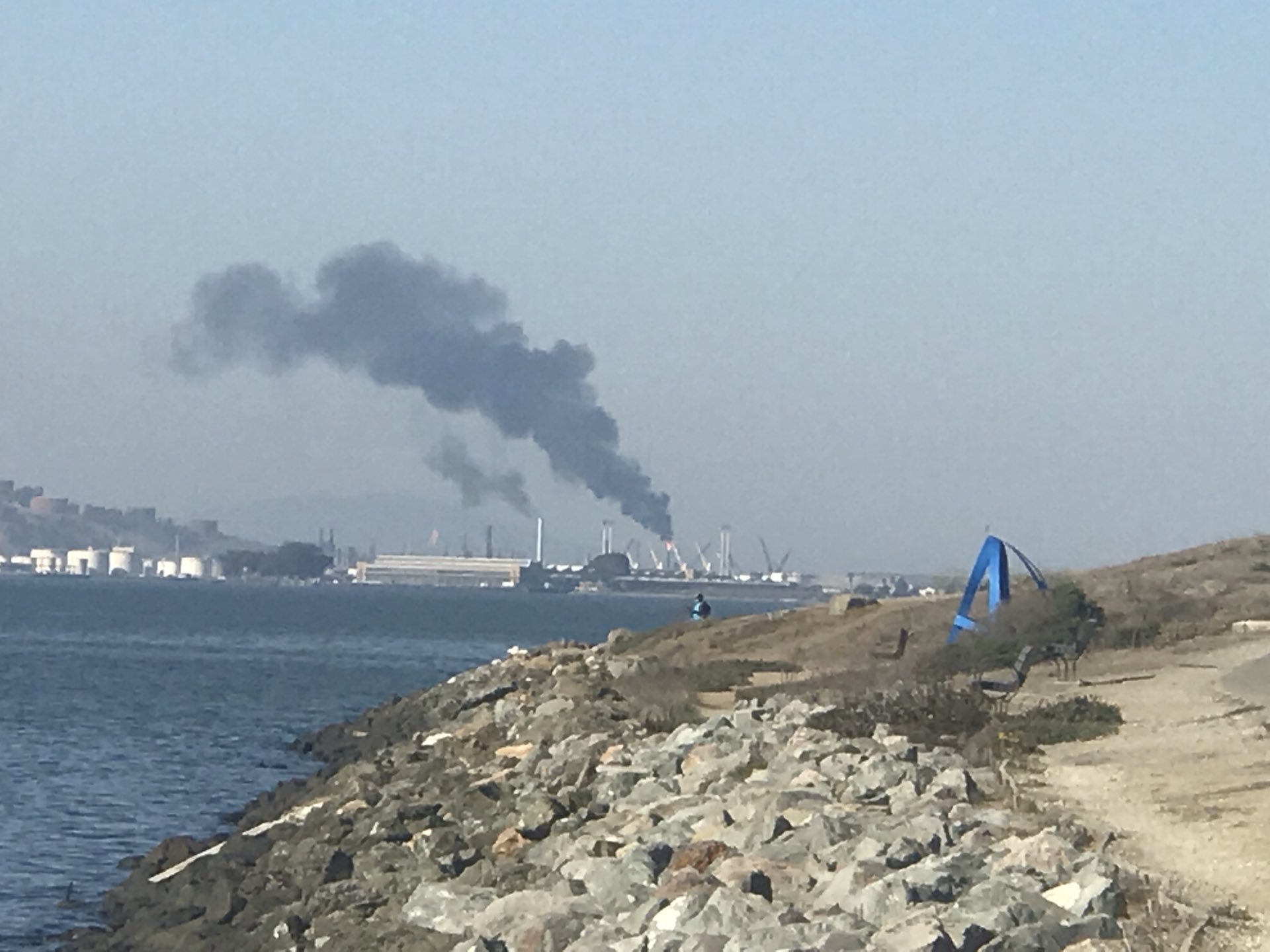Richmond city leaders sent a recording of a recent city council meeting to Chevron executives documenting the concerns local residents have about a significant malfunction the oil giant's refinery recently experienced that has led the facility to send gases to its flares on and off for days.
The proposal to send the video to the company, which passed unanimously last Tuesday night, came after two Chevron officials gave a presentation to the city council about the accident that took place during last month's massive storm, which triggered the facility to belch out flames and smoke.
Members of the city council and local residents said at the meeting they were dissatisfied by the explanation and are looking for answers.
"That Chevron presentation was a lot of talk and nothing was learned," said Randy Joseph, who lives in Richmond. "There were a bunch of non-answers. We've learned nothing about what happened during the flaring."
The problems began Oct. 4, when an "atmospheric river" brought strong rain and wind to the Bay Area. The refinery says it lost some power and steam production, leading to a small fire and several process units going offline. That triggered a safety technique, known as flaring, in which the facility sends gases to its flares to relieve pressure and stabilize operations.
That day, Richmond resident Floy Andrews said she could smell what seemed like fuel from her porch. "I was basically slammed with this petroleum odor. It was overwhelming," she told the council.

Several days after the refinery lost steam and power, the company sent a preliminary report to Contra Costa County health officials that revealed that, in the first two days of flaring, the facility released close to 17 tons of sulfur dioxide.
In its report to the county, during last Tuesday's presentation and in multiple statements, Chevron has emphasized that the air quality tests it took — and ones that local agencies conducted — did not detect any violations of health standards.
However, local air regulators are investigating whether Chevron's flaring led to a series of odors in the area, according to Ralph Borrmann, a representative of the Bay Area Air Quality Management District.
The day after the storm, the West Contra Costa Unified School District closed Richmond High along with Ford and Peres elementary schools because of a strong fuel-like odor.
Three days later, on Oct. 28, teachers and students at Richmond High smelled gas again and were briefly evacuated.
